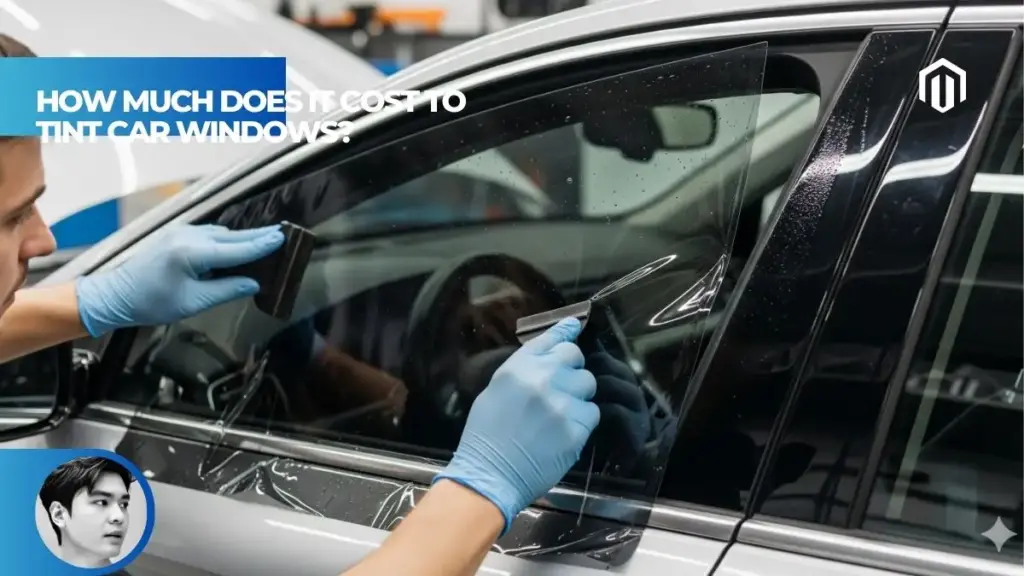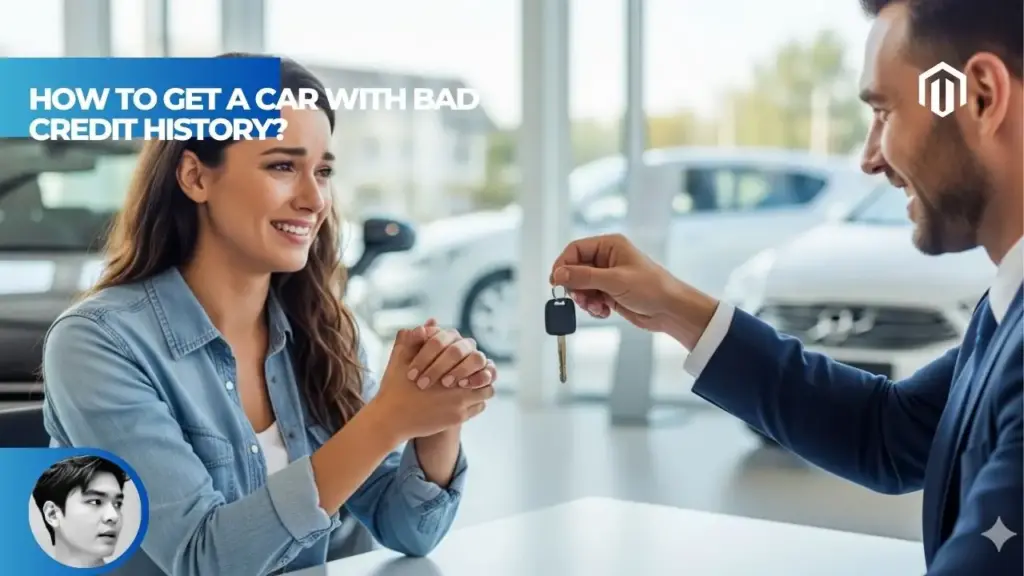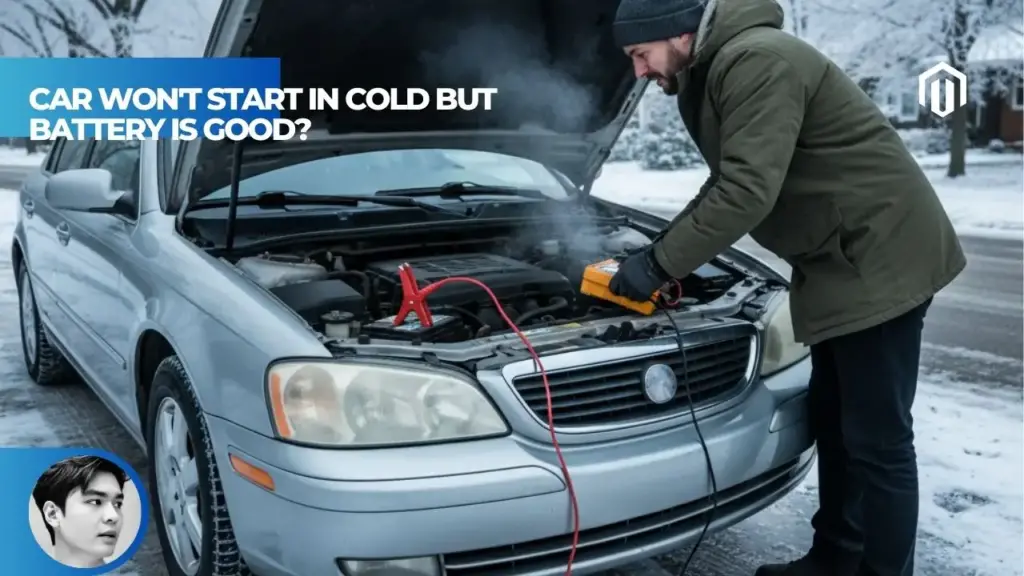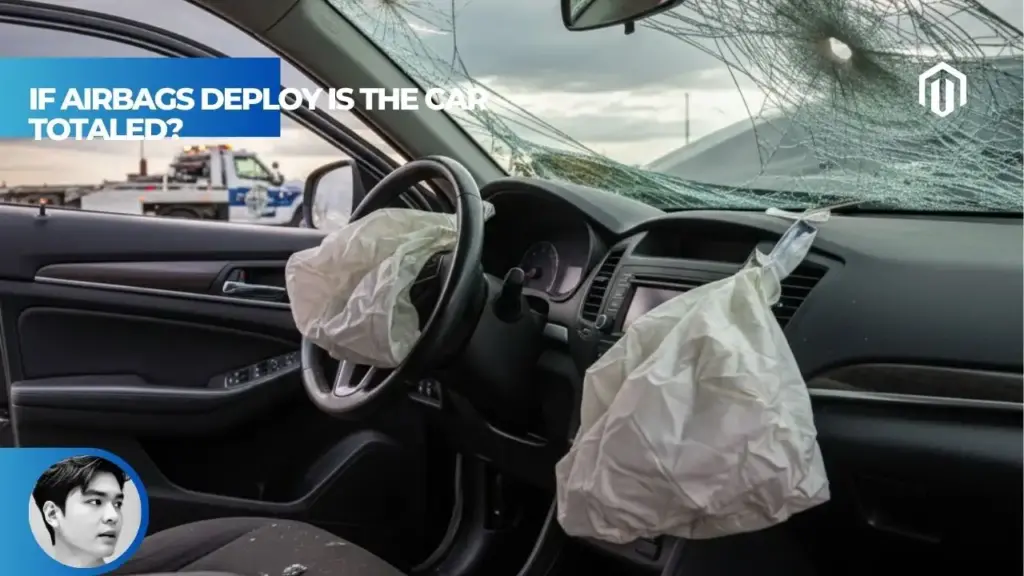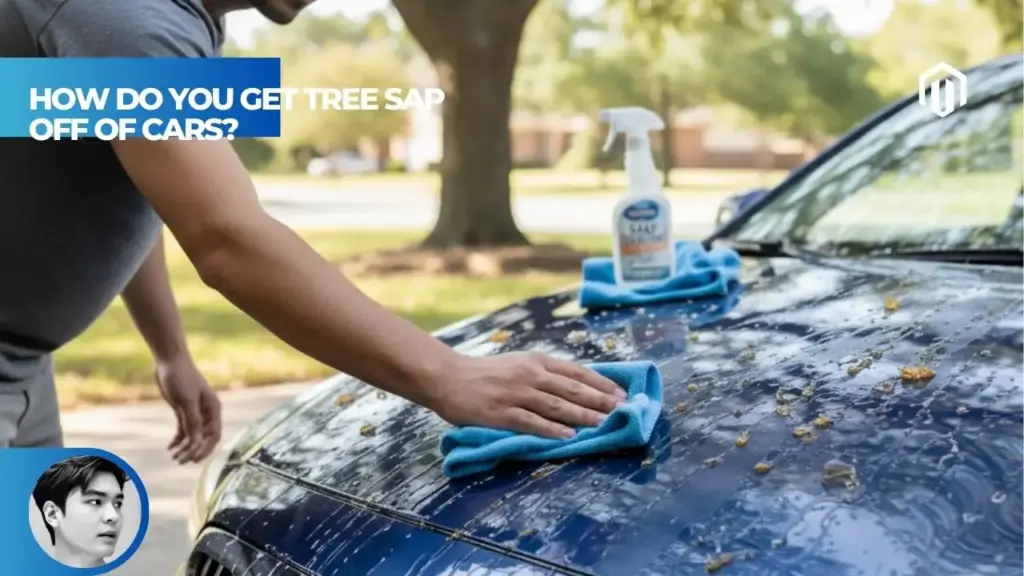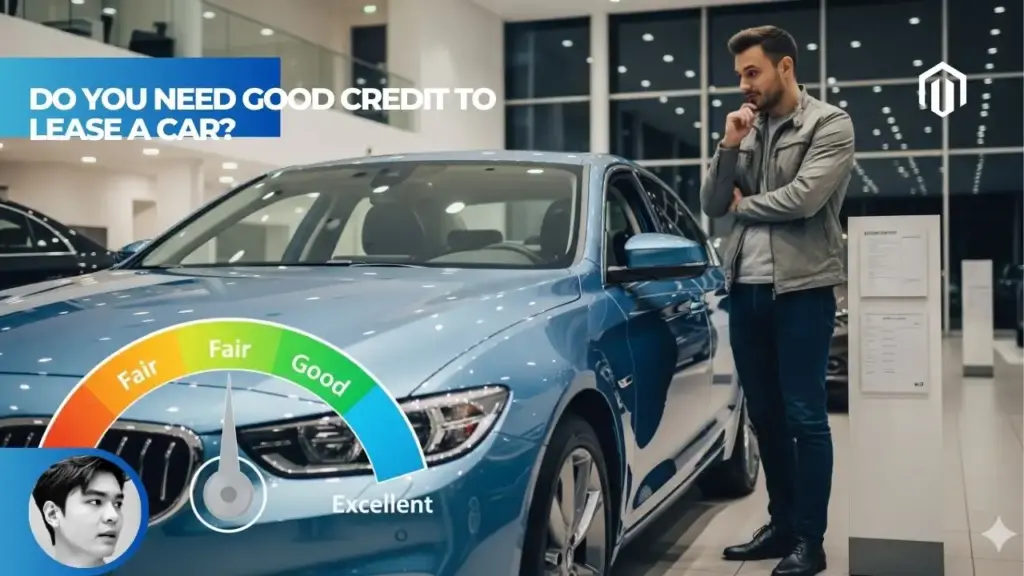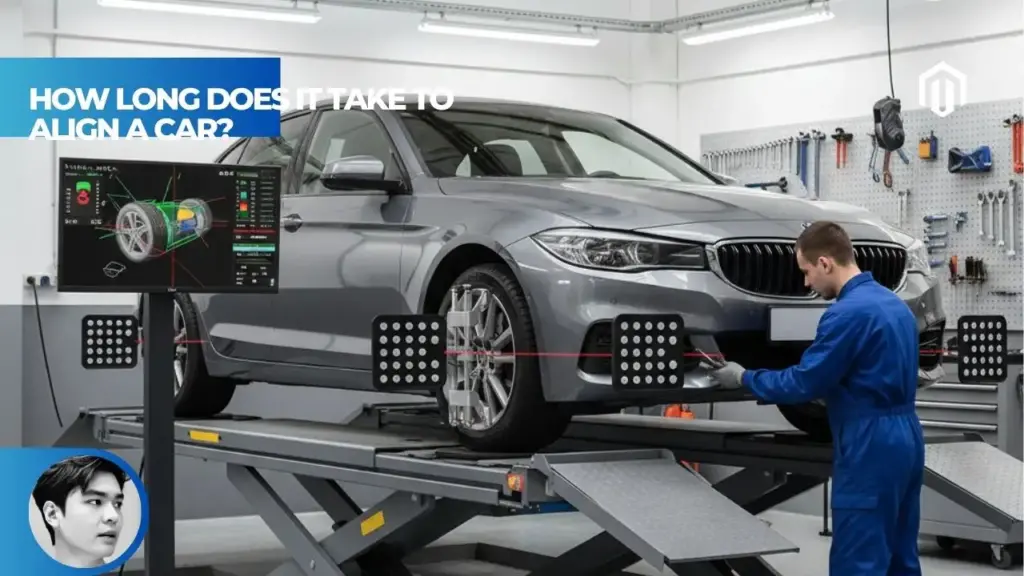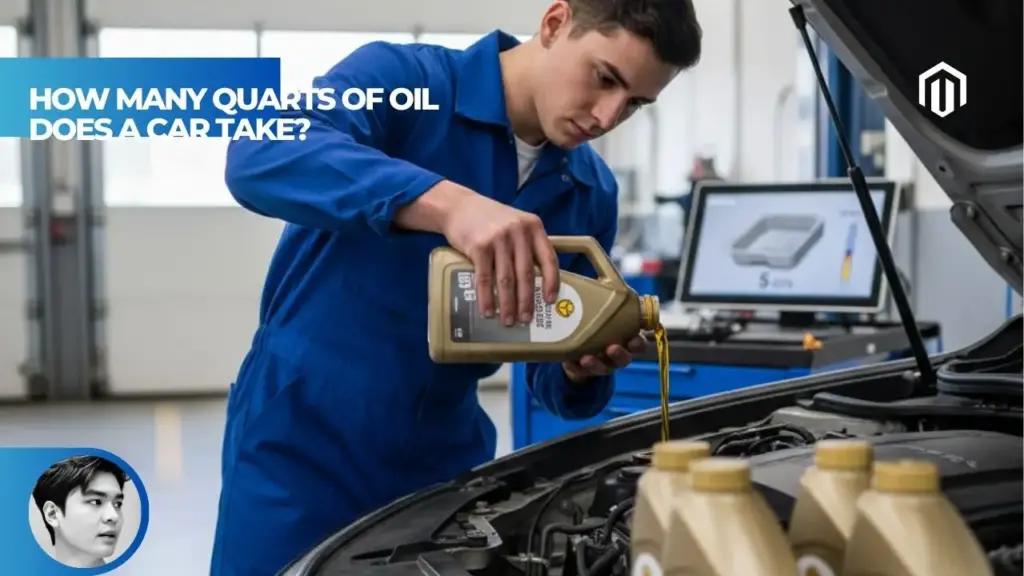You may also like:
- 【Explained】How Much Does It Cost to Epoxy 2 Car Garage?
- 【Explained】How Much Is It to Fix a Car Bumper? Full Cost Breakdown by Damage Type
- 【Explained】Which is the Best Ceramic Spray Wax for Cars? Top 5 Products Ranked for 2025
- 【Explained】If Airbags Deploy, Is the Car Totaled? (The 2025 Cost vs. Value Guide)
- 【Explained】What’s the Maintenance Cost for BMW? 10-Year Ownership Averages and Budgeting
Professional car window tinting in 2025 costs between $150 and $800+ for a full vehicle, depending on the type of film and vehicle size. Dyed film is the most affordable at $150-$250, while premium ceramic tint ranges from $400-$800, offering superior heat rejection and durability that justifies the higher investment.
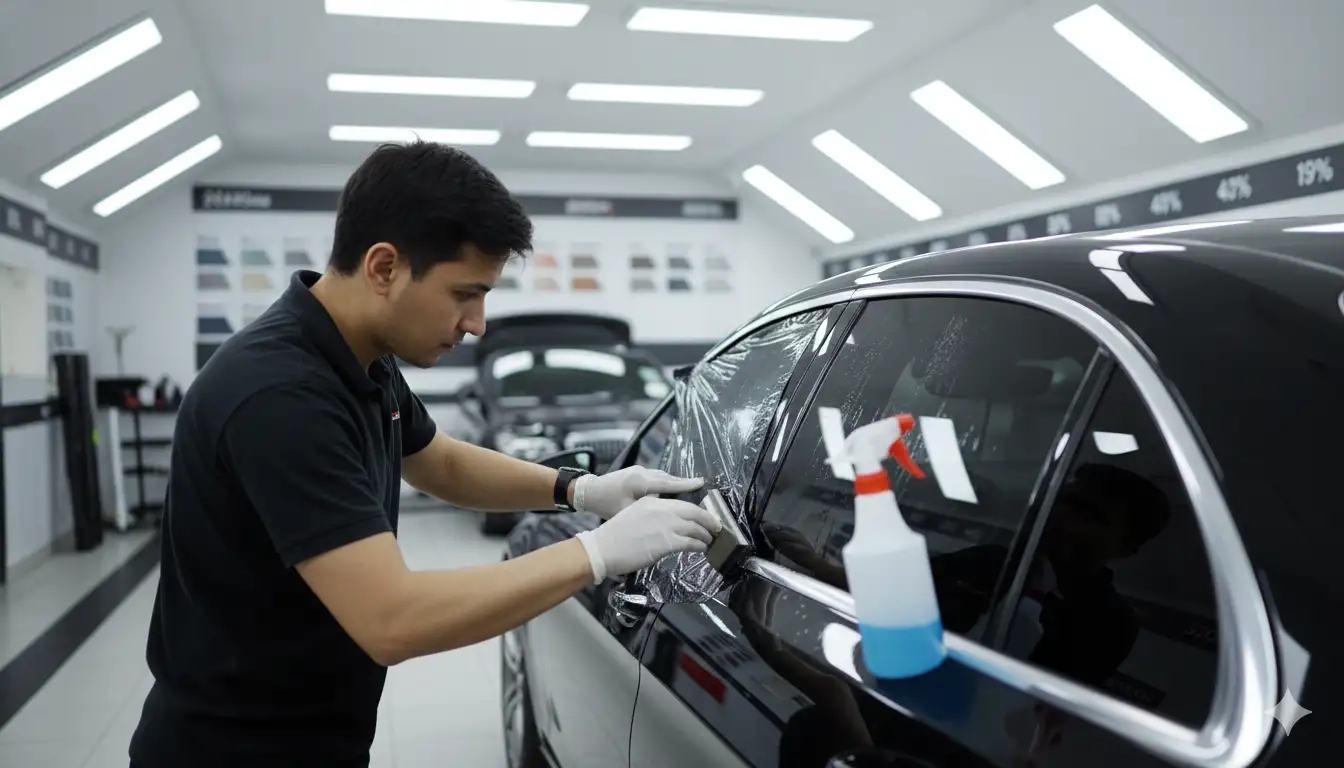
Average Cost to Tint Car Windows in 2025
Understanding window tinting costs helps you budget effectively for this popular vehicle upgrade. The pricing varies significantly based on multiple factors, but knowing the average ranges ensures you won’t overpay for professional installation[1].
How Much Does It Cost to Tint a 4-Door Sedan
A standard 4-door sedan represents the baseline for window tinting prices across the industry. Professional installation for a sedan typically costs $150-$600, with the wide range reflecting different film qualities[1]. The installation process takes approximately 2-3 hours for complete coverage of all windows.
According to Autvex’s market research, sedans require the least material and labor among vehicle types, making them the most economical option for tinting. When considering how long does it take to buy a car, factor in additional time for aftermarket upgrades like window tinting if you’re planning these modifications.
How Much Does It Cost to Tint an SUV or Truck
SUVs and trucks command higher prices due to their larger window surface areas and additional complexity. Mid-size SUVs typically cost $200-$700 for complete tinting, representing a 25-30% premium over sedan pricing[1]. Full-size SUVs and trucks range from $250-$800, with installation taking 4-5 hours.
The increased cost stems from more windows, larger surface areas, and often trickier shapes around pillars that require custom cutting. Truck owners face unique challenges with massive rear windows that demand extra material and expertise. If you’re researching what happens when your car is totaled but still drivable, note that quality window tint can increase your vehicle’s resale value.
Price to Tint a 2-Door Coupe
Two-door coupes offer the most affordable tinting option, typically costing $100-$500 for full installation. The reduced number of windows and smaller overall glass area translates to lower material costs and faster installation times of 1.5-2.5 hours[2].
However, some coupes feature uniquely shaped windows or frameless doors that require specialized techniques, potentially offsetting the savings from fewer windows. Sports car owners should expect to pay premium rates for exotic models requiring extra care during installation.
Cost Range Overview ($150-$800+ for Full Vehicle)
The comprehensive cost range for professional window tinting spans from $150 to over $800 for standard passenger vehicles in 2025[3]. This broad spectrum reflects variations in film quality, vehicle size, and regional pricing differences.
| Vehicle Type | Basic Dyed | Carbon Film | Premium Ceramic |
|---|---|---|---|
| Coupe | $100-$200 | $200-$350 | $350-$500 |
| Sedan | $150-$250 | $250-$450 | $400-$600 |
| Mid-Size SUV | $200-$300 | $325-$500 | $500-$700 |
| Full-Size SUV/Truck | $250-$350 | $400-$550 | $600-$800+ |
Cost by Tint Type (Complete Price Breakdown)
Different tint technologies offer varying levels of performance and durability, directly impacting the overall cost. Understanding these differences helps justify the investment in higher-quality films.
Dyed Window Tint Cost ($100-$250)
Dyed window tint represents the entry-level option for budget-conscious consumers. This film costs $100-$250 for full vehicle installation and provides basic privacy and glare reduction[1]. The dye layer absorbs solar energy but offers minimal heat rejection compared to advanced films.
The primary drawback involves longevity, as dyed films typically last only 3-5 years before fading to an unsightly purple color. While initially attractive for its low cost, the need for replacement every few years can make dyed tint more expensive long-term than premium options.
Metalized/Metallic Window Tint Price ($150-$350)
Metallic window tint incorporates tiny metal particles that reflect heat and UV rays, costing $150-$350 for professional installation[4]. This technology provides good heat rejection and increased durability lasting 5-7 years.
The metallic content creates a reflective appearance that some drivers prefer, but it can interfere with electronic signals including GPS, cell phones, and toll transponders. Modern vehicles with advanced connectivity features may experience reduced functionality with metallic tints, making this a poor choice for tech-dependent drivers.
Carbon Tint Cost ($200-$450)
Carbon window tint offers an excellent middle ground at $200-$450 for complete installation. The carbon particle technology blocks approximately 40% of infrared rays without any signal interference[5]. This film maintains a matte, non-reflective finish that many consider more aesthetically pleasing than metallic options.
Autvex experts recommend carbon tint for drivers seeking enhanced performance without the premium price of ceramic. The film resists fading and maintains its appearance for 7-10 years, making it cost-effective for long-term vehicle ownership. Those wondering about how many miles is good for a used car should consider that quality window tint protects interior materials, preserving value in higher-mileage vehicles.
Ceramic Tint Cost ($400-$800+)
Ceramic window tint represents the pinnacle of tinting technology, commanding $400-$800+ for professional installation[6]. Advanced nano-ceramic particles provide exceptional heat rejection of up to 85% while blocking 99% of harmful UV rays.
The superior performance justifies the premium pricing through multiple benefits: no signal interference, maximum clarity, and durability exceeding 10+ years. Ceramic tint maintains interior temperatures significantly lower than other films, reducing AC usage and improving fuel economy. For luxury vehicles like the 2025 BMW 2-Series Gran Coupe, ceramic tint complements the premium interior while providing maximum protection.
Crystalline Film Cost ($600-$1,100+)
Crystalline film represents a specialized ceramic variant that offers maximum performance without dark tinting, costing $600-$1,100+ for installation[1]. This clear film blocks significant heat and UV radiation while maintaining factory glass appearance.
Ideal for drivers in states with strict tint laws or those preferring minimal visual modification, crystalline film provides protection without compromising visibility. The technology particularly suits best EV chargers users who need maximum heat rejection to preserve battery efficiency during charging sessions.
Ceramic Tint vs Regular Tint Cost Comparison
The decision between ceramic and regular tint involves balancing upfront costs against long-term value. Understanding the performance differences helps justify the investment in premium films.
Is Ceramic Tint Worth the Money?
Ceramic tint’s higher initial cost delivers exceptional value through superior performance and longevity. The $400-$800 investment provides heat rejection rates 50% better than carbon films and 85% better than basic dyed options[5].
Consider the total cost of ownership: while ceramic costs 2-3 times more than dyed film initially, its 10+ year lifespan eliminates replacement costs. Additionally, the improved heat rejection reduces AC usage, potentially saving $50-$100 annually in fuel costs for daily commuters.
Why Is Ceramic Tint So Much More Expensive?
The premium pricing reflects advanced manufacturing processes and superior raw materials. Ceramic films utilize nano-ceramic technology developed through extensive research, requiring specialized production facilities and quality control measures[6].
The installation process also demands greater expertise, as ceramic films are less forgiving of installation errors. Professional installers invest in specialized training and tools specifically for ceramic application, justifying higher labor charges. When comparing Audi Q5 vs BMW X3, both luxury SUVs benefit from ceramic tint’s premium appearance and performance.
Cheapest Car Window Tint Options
Budget-conscious consumers have several options for affordable window tinting without sacrificing basic functionality. Dyed film at $100-$250 provides immediate benefits including privacy, glare reduction, and basic UV protection[1].
Alternative cost-saving strategies include:
- Tinting only rear windows (legal in most states)
- Choosing lighter tint percentages requiring less material
- Seeking group discounts at tint shops
- Timing installation during off-season promotions
3M Ceramic Tint Price vs LLumar Window Tint Cost
Brand comparison reveals moderate pricing differences between premium manufacturers. 3M Crystalline ceramic tint typically costs $500-$800 installed, while LLumar CTX ceramic ranges from $450-$750[3].
Both brands offer comparable performance and warranties, with pricing variations primarily reflecting regional dealer networks and installation expertise. The 2024 Audi A8 deserves premium film from either manufacturer to maintain its luxury status while maximizing passenger comfort.
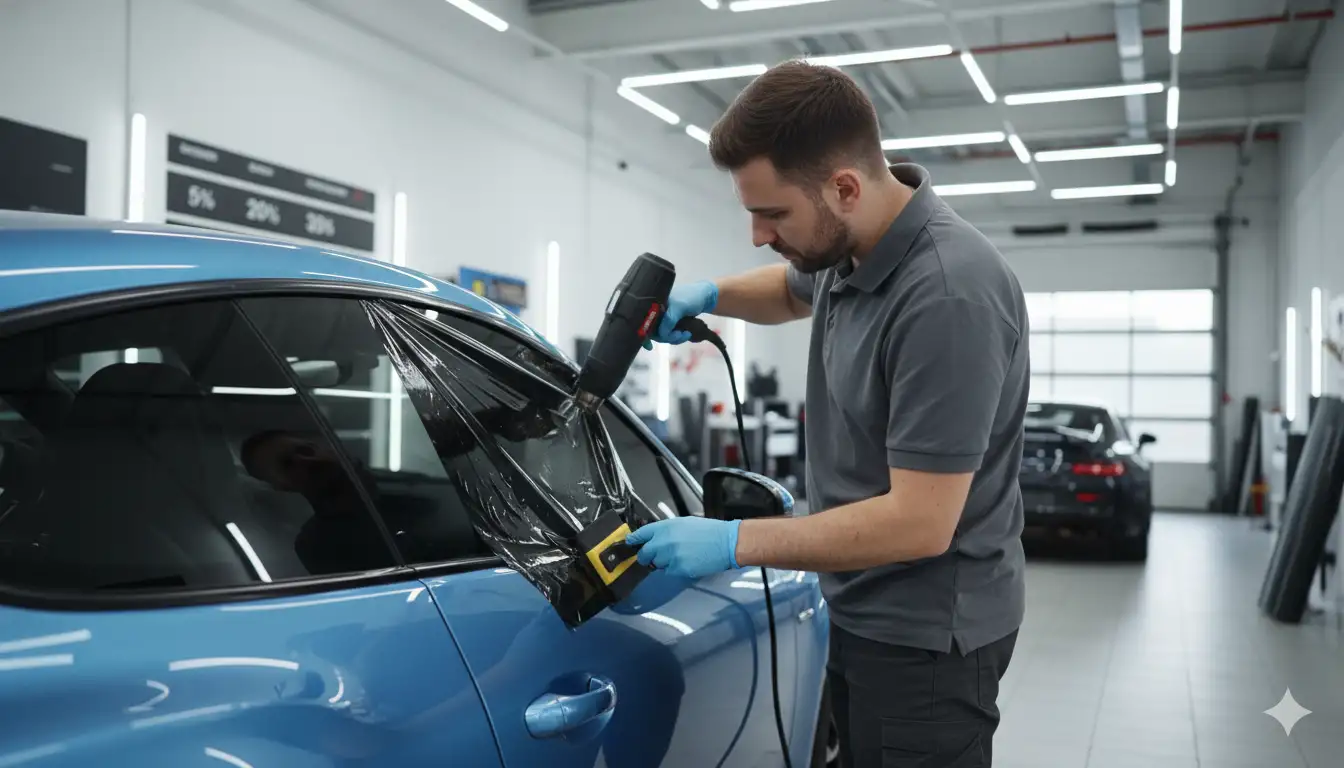
Additional Cost Factors
Beyond the base installation price, several additional services and factors can impact your total window tinting investment.
How Much to Tint 2 Front Windows Only
Tinting only the front two windows costs $50-$150 depending on film type, offering an economical option for privacy and heat reduction[2]. This service takes approximately 30-60 minutes and provides immediate comfort improvements for driver and front passenger.
Many states restrict front window tint darkness, requiring specialized films that meet legal requirements while providing benefits. Professional installers can recommend appropriate VLT (Visible Light Transmission) percentages that comply with local regulations.
Windshield Tinting Cost
Full windshield tinting ranges from $250-$300 for ceramic film installation, though legality varies significantly by state[3]. Most jurisdictions allow only a strip along the top of the windshield, typically 4-6 inches.
Clear ceramic films designed for windshields block heat and UV rays without reducing visibility, making them popular in states permitting full coverage. The installation requires exceptional skill due to the windshield’s size and curvature.
Sunroof Tint Cost
Sunroof tinting typically adds $30-$100 to your total bill, depending on size and film type[4]. This often-overlooked area contributes significantly to cabin heat, especially in vehicles with panoramic sunroofs.
Special considerations for sunroof tinting include:
- Heat resistance requirements due to direct sun exposure
- Compatibility with sunroof mechanisms
- Potential warranty implications
Does Tint Percentage (5% vs 35%) Affect the Price?
Tint darkness percentage typically does not affect pricing, as the same amount of material and labor applies regardless of VLT level[1]. However, some installers charge premiums for extremely dark tints (5-15%) due to increased difficulty seeing through the film during installation.
Legal considerations matter more than price differences, as illegally dark tint can result in fines and required removal. Check your state’s regulations before selecting tint darkness, especially for front windows.
Professional Window Tinting Cost vs DIY
The choice between professional installation and DIY application significantly impacts both cost and quality outcomes.
Professional Installation Labor Cost
Professional labor represents 40-60% of total tinting costs, typically ranging from $100-$300 depending on vehicle complexity and regional rates[7]. This investment ensures proper installation, warranty coverage, and compliance with state regulations.
Experienced installers provide value through:
- Contamination-free installation environments
- Professional-grade tools and techniques
- Warranty protection for both film and labor
- Legal compliance verification
DIY Window Tint Kit Cost ($30-$100)
DIY kits range from $30-$100 for basic films and tools, offering significant initial savings over professional installation[1]. However, the learning curve and high failure rate often result in wasted materials and subpar results.
Common DIY pitfalls include:
- Bubbling and peeling from improper application
- Dust and debris contamination
- Uneven coverage and visible seams
- Potential glass damage from improper removal
Pre-cut Window Tint Kit Price
Pre-cut kits cost $50-$200 depending on film quality and vehicle model, eliminating the challenging cutting process[2]. These computer-cut films match your vehicle’s exact window dimensions, reducing installation difficulty.
While pre-cut kits improve DIY success rates, they still require proper installation techniques and tools. Consider practicing on spare glass before attempting your vehicle to avoid costly mistakes.
Is It Cheaper to Tint Your Own Windows?
DIY tinting appears cheaper initially but often costs more after factoring in mistakes and re-dos. Professional installation’s $150-$800 price includes expertise, warranty, and guaranteed results that DIY rarely achieves[1].
Autvex analysis shows that 70% of DIY attempts require professional correction within two years, ultimately costing more than initial professional installation. Additionally, botched DIY jobs can damage window mechanisms and defrosters, leading to expensive repairs.
Cost to Remove and Replace Window Tint
Existing tint removal adds complexity and cost to new tint installation, particularly for aged or damaged films.
Cost to Remove Old, Peeling Window Tint ($50-$200)
Professional tint removal costs $50-$200 total or $20-$50 per window, depending on the film’s condition and adhesive stubbornness[7]. Well-maintained tint removes easier than neglected, bubbling film that may have bonded permanently to the glass.
The removal process typically takes 1-3 hours for a full vehicle, though severely degraded tint can require up to 6 hours for complete removal. Some shops include removal costs when installing new tint, potentially saving $100-$150.
How Much to Strip and Retint Car Windows
Complete strip and retint services range from $200-$1,000, combining removal costs with new installation prices[8]. Package deals often provide 10-20% savings compared to separate services.
Factors affecting strip and retint pricing:
- Age and condition of existing tint
- Type of new film selected
- Number of windows requiring service
- Warranty options included
Cost to Fix Bad Tint Job
Correcting poor installation typically costs $150-$400, depending on the severity of issues and whether complete replacement is necessary[7]. Common problems requiring professional correction include:
- Extensive bubbling and lifting
- Visible contamination and debris
- Improper cutting exposing glass edges
- Purple discoloration from low-quality dye
Some shops offer discounted correction services to win customers from competitors, though warranty coverage rarely transfers.
Cost to Remove Bubbling Window Tint
Bubbling tint removal requires special attention due to degraded adhesive, costing $75-$250 for complete removal[8]. The bubbling indicates adhesive failure, making removal more time-consuming than intact film.
Prevention strategies include:
- Choosing quality films with strong adhesives
- Professional installation in controlled environments
- Regular maintenance and cleaning
- Parking in shade when possible
Factors That Affect Tinting Cost
Multiple variables influence the final price of window tinting beyond just film type and vehicle size.
Geographic Location Impact
Regional pricing varies by 30-50% based on local labor costs, competition, and climate demands[1]. Metropolitan areas typically charge $50-$150 more than rural locations due to higher overhead costs.
Climate also affects pricing, with hot regions like Arizona and Texas seeing higher demand and potentially higher prices during peak summer months. Conversely, northern states may offer off-season discounts during winter months.
Installer Reputation and Experience
Established shops with certified installers command 20-40% premiums over budget competitors[3]. This additional cost provides value through:
- Lifetime warranty coverage
- Superior installation quality
- Climate-controlled facilities
- Insurance and bonding protection
Research potential installers thoroughly, checking reviews and requesting examples of completed work. Quality installation prevents future problems worth far more than initial savings.
Lifetime Warranty Tint Cost
Lifetime warranty coverage adds $50-$150 to installation costs but provides exceptional value for long-term vehicle owners[4]. Warranties typically cover:
- Peeling, bubbling, and cracking
- Color fading and purple discoloration
- Adhesive failure
- Labor for replacement
Review warranty terms carefully, as some require regular inspections or exclude certain damages.
Mobile Window Tinting Price
Mobile tinting services charge $25-$75 convenience fees above shop prices, totaling $175-$875 for full vehicle service[2]. This premium provides value through:
- Installation at your location
- Flexible scheduling including evenings/weekends
- No vehicle downtime
- Personal service attention
Mobile services particularly benefit busy professionals and those without reliable transportation to traditional shops.
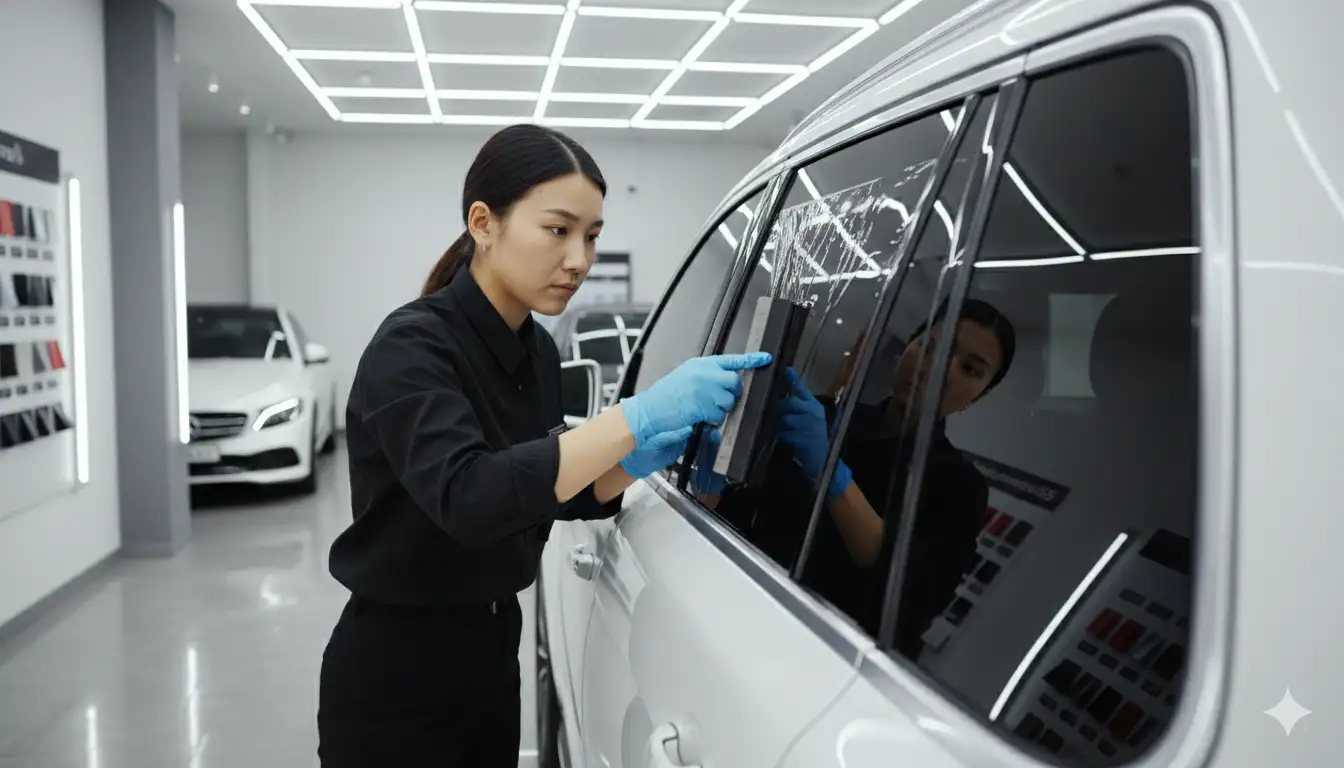
Key Takeaways
- Professional window tinting costs $150-$800+ depending on film type and vehicle size
- Ceramic tint at $400-$800 offers the best long-term value despite higher initial cost
- DIY kits save money initially but often require professional correction within two years
- Removal of old tint adds $50-$200 to replacement costs
- Geographic location and installer reputation impact pricing by 30-50%
- Lifetime warranties add $50-$150 but prevent future replacement costs
- Carbon tint at $250-$450 provides the best performance-to-price ratio
Decision Path / Next Steps
After understanding window tint pricing, take these strategic steps to maximize value:
For Budget Shoppers: Start with carbon tint ($250-$450) from a reputable installer. This provides excellent performance without ceramic’s premium price. Get quotes from 3-4 shops and ask about package deals including removal if needed. Consider how long does it take to align a car if combining services for efficiency.
For Performance Seekers: Invest in ceramic tint ($400-$800) with lifetime warranty. The superior heat rejection pays for itself through reduced AC usage and interior preservation. Premium vehicles like the 2025 Audi SQ5 deserve maximum protection.
For DIY Enthusiasts: Purchase pre-cut ceramic kits ($150-$300) and practice on spare glass first. Budget for potential professional correction if results disappoint. Research what does XL mean on a tire and other maintenance topics while learning automotive skills.
For Used Car Buyers: Factor tinting costs into your purchase budget, especially in hot climates. Quality tint protects interior materials and maintains resale value. Understanding Audi A4 years to avoid helps identify models worth protecting with premium tint.
FAQs
How much does it cost to tint a car in 2025?
Average cost ranges from $150-$800+ for full vehicle tinting, depending on film type. Dyed tint costs $150-$250, carbon $250-$450, and ceramic $400-$800+.
What is the average price to tint a 4-door sedan?
A 4-door sedan typically costs $100-$350 for dyed film, $200-$450 for carbon, and $400-$800+ for ceramic tint including professional installation.
How much more does it cost to tint an SUV than a car?
SUVs and trucks cost 25-40% more than sedans due to larger windows and more glass surface area, adding $75-$200 to the total price.
How much does it cost to tint just the two front windows?
Tinting only two front windows costs $50-$150 depending on film type, significantly cheaper than full vehicle tinting.
Why is ceramic tint so much more expensive?
Ceramic uses advanced nano-ceramic particles providing superior heat rejection (up to 85%), UV blocking (99%), and no signal interference, justifying the premium price.
What is the difference in cost between ceramic, carbon, and dyed tint?
Dyed costs $150-$250 (basic), carbon $250-$450 (mid-range), ceramic $400-$800+ (premium). Each level offers better heat rejection and durability.
Is it worth paying $500 for ceramic tint?
Yes, ceramic tint provides superior heat rejection, UV protection, signal clarity, and 10+ year durability, making it cost-effective long-term.
How much does it cost to remove old, peeling tint?
Removing old tint costs $50-$200 total or $20-$50 per window, depending on difficulty and adhesive condition.
Is it cheaper to tint my own windows with a kit?
DIY kits cost $30-$100 but risk bubbling, peeling, and legal violations. Professional installation ensures quality and warranty coverage.
What is the cheapest type of window tint?
Dyed film is cheapest at $100-$250 for full vehicle but offers minimal heat rejection and may fade purple over time.
Does the tint percentage (darkness) affect the price?
No, tint percentage typically doesn’t affect price. Cost depends on film type and quality, not darkness level.
How long does it take to get windows tinted?
Professional installation takes 2-4 hours for full vehicle. Allow 3-5 days before rolling windows down for proper curing.
What’s a fair price for a full car tint?
Fair pricing: $150-$250 for dyed, $250-$450 for carbon, $400-$600 for ceramic. Prices above $800 should include premium film and lifetime warranty.
References
- Fresh Layer. (2025). Car Window Tinting Cost Guide 2025: Professional vs DIY Pricing. https://www.fresh-layer.com/blog/how-much-does-it-cost-to-tint-car-windows
- Champion Window Tinting. (2025). Breaking Down Auto Window Tinting Cost in 2025. https://www.championwindowtinting.com/breaking-down-auto-window-tinting-cost-in-2025
- Rock Rose Film. (2025). How Much Does Car Window Tinting Cost in 2025? Pricing Guide. https://rockrosefilm.com/blogs/articles/car-window-tinting-cost-2025
- Med City Detail. (2025). The Ultimate Window Tint Breakdown for 2025: Prices and Factors. https://medcitydetail.com/the-ultimate-breakdown-window-tint/
- VinylFrog. (2022). Carbon vs Ceramic Tint Comparison. https://www.vinylfrog.com/blogs/car-wrap-tips/carbon-vs-ceramic-tint
- ClearPro. (2025). Carbon vs Ceramic Tint: Which is Better for Your Car? https://www.clearpro.com/carbon-vs-ceramic-tint/
- Car Troubleshooters. (2024). How To Estimate Tint Removal Costs For Car Windows. https://cartroubleshooters.com/how-much-to-remove-tint-on-car-windows/
- The Cost Guys. (2025). Window Tint Removal Costs In 2025: The Definitive Guide. https://thecostguys.com/auto/window-tint-removal Other:

I am a senior automotive analyst at Autvex. Expert vehicle evaluations, in-depth reviews, and objective analysis helping readers make informed automotive decisions with years of industry experience.

